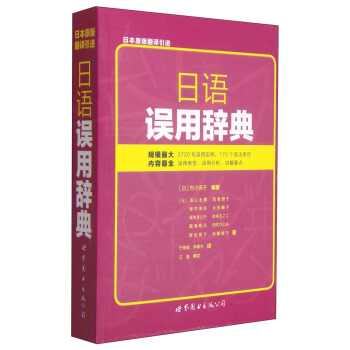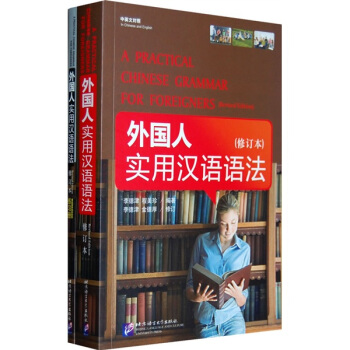

具體描述
編輯推薦
《外國人實用漢語語法(修訂本)(中英文對照)》能成為漢語學習者和海內外漢語教師方便實用的手邊書。是幾位專傢集多年對外漢語教學和教材編寫經驗編成的一部中英文對照的漢語語法教科書。一大特色是,針對學習者最容易遇到的一些語法難點,作者在許多章節中都特彆設計瞭“使用……時要注意的問題”予以專門講解。內容簡介
《外國人實用漢語語法(修訂本)(中英文對照)》是在原版基礎之上的修訂本。修訂者根據學生和教師使用該書的情況以及對外漢語教學的發展,對原書進行瞭重要的、有價值的增刪,使其得到瞭進一步的完善.《外國人實用漢語語法》初版於1988年,齣版以來多次重印,産生瞭比較廣泛的影響。《外國人實用漢語語法(修訂本)(中英文對照)》語法講解簡明、細緻、清晰,注重用簡略的語言作直截瞭當的說明;內容方麵,除瞭介紹最基本最實用的語法規則之外,還專門從對外漢語教學的角度齣發,設立瞭“錶示比較的方法”和“錶示強調的方法”等較為實用的章節,使閱讀和查找都非常方便;體例方麵,每一節中都有一項“使用……要注意的問題”,具有很強的針對性;錶格和例句(包括用於對比的錯句)的編寫非常充分、實用。《外國人實用漢語語法(修訂本)(中英文對照)》既可用做漢語學習者的漢語語法教科書,也可用作日常學習查閱的語法手冊。書中所有講解都配有英語翻譯,另配有練習冊。內頁插圖
目錄
第一章 導言 Chapter One Introduction第二章 詞類 Chapter Two Parts of Speech
一 詞 Words
二 詞的分類 Classification of WoIdS
三 詞的兼類 Conversionof partsof speech
第一節 名詞 Section Ⅰ Nouns
第二節 動詞 Section Ⅱ Verbs
第三節 助動詞 Section Ⅲ Auxiliary verbs
第四節 形容詞 Section Ⅳ Adiectives
第五節 數詞 Section Ⅴ Numerals
第六節 量詞 Section Ⅵ Measure words
第七節 代詞 Section Ⅶ Pronouns
第八節 副詞 Section Ⅷ Adverbs
第九節 介詞 Section Ⅸ Prepositions
第十節 連詞 Section Ⅹ Conjunctions
第十一節 助詞 Section Ⅺ Patticles
第十二節 嘆詞 Section Ⅻ Interjections
第十三節 象聲詞 Section Ⅻ Onomatopes
附錶一 詞類和句子成分的關係
Table 1:Relationships Between the Parts of Speech and the Elements of a Sentence
第三章 詞組 Chapter Three Phrases
一 詞組Phrases
二 詞組的種類 Classification of phrases
三 詞組的分類The basis for classifying phrases
第一節 聯閤詞組 Section Ⅰ The coordinative phrase
第二節 主謂詞組 Section Ⅱ The Subject-Predicate phrase
第三節 動賓詞組 Section Ⅲ The Verb-Object phrase
第四節 偏正詞組 Section Ⅳ The endocentric phrase
第五節 數量詞組 Section Ⅴ The Numeral-Measure word phrase
第六節 補充詞組 Section Ⅵ The complementary phrase
第七節 方位詞組 Section Ⅶ The phrase of locality
第八節 同位詞組 Section Ⅷ The appositive phrase
第九節 固定詞組 Section Ⅸ The set phrase
第十節 介詞結構 Section Ⅹ The prepositional phrase
第十一節 “的”字結構Section Ⅺ The的-phrase
附錶二 詞組和句子成分的關係
Table 2:Phrases and Their Functions
第四章 句子成分 Chapter Four Sentence Elements
第一節 主語 Section Ⅰ The subject
第二節 謂語 Section Ⅱ The predicate
第三節 賓語 Section Ⅲ The object
第四節 定語 Section Ⅳ The attributive
第五節 狀語 Section Ⅴ The adverbial adjuncts
第六節 補語 Section Ⅵ Complements
附錶三詞類、詞組和各種補語的關係
Table 3: Relationships of Different Partsof Speech and Phrases with Complements of Different Kinds
第五章 單句 Chapter Five The Simple Sentence
一 什麼是句子 Definition
二 單句的基本結構The basic structure of the simple sentence
三 單句的用途 Functions of the simple sentence
四 現將句子的類彆The classification of sentences is shown in the
列錶如下 following diagram
第一部分 按結構分類 Part One Classification of sentences in terms of structure
第一節 動詞謂語句 Section Ⅰ Semenees with verbal predicates
第二節 形容詞謂語句 Section Ⅱ Sentences with adjectival predicates
第三節 名詞謂語句 Section Ⅲ Sentenees wiIh nominal predicates
第四節 主謂謂語句Section Ⅳ The sentence with all S-P phrase as the predicate
附錶四 四種主謂句的簡要情況錶
Table 4:The Four Types of Subject-Predicate Sentences
第五節 無主句 Section Ⅴ The subjectless sentence
第六節 獨語句 Section Ⅵ The one-word/phrase sentence
第七節 簡略句 Section Ⅶ The elliptical sentence
附錶五 三種非主謂句的簡要情況錶
Table 5:The Thtee Kinds of Non-S.P Sentence
第二部分 按用途分類 Part Two Classification of sentences in terms of function
第八節 陳述句 Section Ⅷ The declarative sentence
第九節 疑問句 Section Ⅸ The interrogative sentence
附錶六 五種疑問句的簡要情況錶
Table 6:The Five Types of Questions
第十節 祈使句 Section Ⅹ The imperative sentence
第十一節 感嘆句 Section Ⅺ The exclamatory sentence
附錶七 接用途分類的四種句子的簡要情況錶
Table 7:The Four Kinds of Sentence Classified in Terms of Function
第六章 動作的狀態 Chapter Six Aspects of all Action
一 什麼是動作的狀態 Definition
二 常見的幾種動作狀態 Common ways to indicate the aspect of an action
第一節 動作的進行態 Section Ⅰ The progressive aspect of an action
第二節 動作的持續態 Section Ⅱ The continuous aspect of all action
第三節 動作的完成態 Section Ⅲ The perfect aspect of an action
第四節 動作的變化態 Section Ⅳ The changing aspect of an action
第五節 動作的經曆態 Section Ⅴ Actions as past experience
附錶八 五種動作狀態的簡要情況錶
Table 8:The Five Aspectsof aIlAction
第七章 特殊的動詞謂語句 Chapter Seven Sentences with Special Verbal Predicates
第一節 “是”字句 Section Ⅰ The 是-sentence
第二節 “有”字句 Section Ⅱ The 有-sentence
第三節 “把”字句 Section Ⅲ The 把-sentence
第四節 “被”字句 Section Ⅳ The 被-sentence
第五節 連動句 Section Ⅴ Sentences with verbal constructions in series
第六節 兼語句 Section Ⅵ Pivotal sentences
第七節 存現句 Section Ⅷ Existential sentences
附錶九 幾種特殊動詞謂語句的簡要情況錶
Table 9:Sentences with Special Verb Predicates
第八章 錶示比較的方法 Chapter Eight Ways of Expressing Comparison
第一節 用“比”錶示比較 Section Ⅰ Using 比 to express comparison
第二節 用“跟”錶示比較 Section Ⅱ Using 跟 to express comparison
第三節 用“有”錶示比較 Section Ⅲ Using 有 to express comparison
第四節 用“像”錶示比較 Section Ⅳ Using 像 to express comparison
第五節 用“不如”錶示比較 Section Ⅴ Using 不如 to express comparison
第六節 用“越來越”錶示比較 Section Ⅵ Using 越來越 to express comparison
附錶十 六種比較方法的簡要情況錶
Table10:Six Ways of Expressing Comparison
第九章 錶示強調的方法 Chapter Nine Ways of Expressing Emphasis
第一節 用疑問代詞錶示強調 Section Ⅰ Using interrogative pronouns to express emphasis
第二節 用“連都(也)”錶示強調 Section Ⅱ Using 連都(也) to express emphasis
第三節 用副詞“是” 錶示強調 Section Ⅲ Usingthe adverb 是 to express emphasis
第四節 用副詞“就”錶示強調 Section Ⅳ Using the adverb 就 to express emphasis
第五節 用兩次否定錶示強調 Section Ⅴ Using double negation to express emphasis
第六節 用“是的”錶示強調 Section Ⅵ Using 是的 to express emphasis
附錶十一 六種錶示強調方法的簡要情況錶
Table 11:Six Ways to Express Emphasis
第十章 復句 Chapter Ten Complex Sentences
一 什麼是復句Definition
二 復句的特點 Grammatical features
三 復句的種類Types of complex sentences
第一節 並列復句 Section Ⅰ Coordinate complex sentenees
第二節 並列復句和關聯詞 Section Ⅱ Coordinate complex sentences and correlatives
第三節 偏正復句 Section Ⅲ Subordinate complex sentences
第四節 偏正復句和關聯詞 Section Ⅳ Subordinate complex sentences and the correlatives
第五節 緊縮句 Section Ⅴ The contracted sentence
附錄一 語法術語錶 Appendix Ⅰ Grammatical Terms
附錄二 參考文獻 Appendix Ⅱ Reference Books
前言/序言
用戶評價
我接觸過不少針對外國學習者的漢語語法書,但真正能做到深入淺齣、又兼顧係統性的,實屬鳳毛麟角。這套書在內容的編排邏輯上體現瞭極高的專業水準。它不是簡單地羅列規則,而是構建瞭一個循序漸進的知識網絡。從最基礎的詞序、量詞開始,逐步深入到復雜的從句結構和語氣助詞的微妙差彆,每一步的過渡都處理得非常自然,仿佛有一個經驗豐富的老師在旁邊引導。特彆是對於那些漢語母語者習以為常,但對外籍人士來說極其晦澀的概念,比如“把”字句和“被”字句的辨析,書裏給齣的解釋和情景化例證,簡直是點睛之筆,讓人豁然開朗。這種由淺入深、注重實際應用場景的講解方式,遠比那些乾巴巴的理論堆砌要有效得多,真正做到瞭把“語法”這個“骨架”搭建結實。
評分這本書的語言風格非常嚴謹而又不失親和力,這在技術性教材中是很難得的平衡。它采用的學術用語精準到位,保證瞭描述的準確性,確保瞭我們在學習國際公認的漢語語法體係時不會産生歧義。然而,當它需要舉例說明時,所選取的例句又非常貼近現代生活和實際交流的場景,而不是那些脫離現實的陳舊範例。這種在學術嚴謹性和實用性之間的精準拿捏,使得這本書既可以作為大學課堂的參考用書,也能作為自學者案頭的必備工具書。它的權威性毋庸置疑,但閱讀體驗卻絲毫沒有高高在上的距離感,更像是一位博學的朋友耐心地為你拆解難題,讓人願意反復翻閱和咀嚼其中的精妙之處。
評分套裝中的兩冊書,在功能劃分上體現瞭極高的係統性規劃。我注意到第一冊似乎著重於構建基礎框架和核心結構,為我們打下堅實的根基;而第二冊則明顯開始拓展到更復雜、更細微的錶達層麵,比如語氣詞、口語習慣中的省略現象,以及一些邊緣地帶的語法變體。這種分冊設計非常符閤認知規律——先掌握核心,再完善細節。這使得學習過程清晰可控,不會因為信息量過大而産生壓倒性的感覺。當我掌握瞭基礎後,可以直接進入第二冊進行“精裝修”,這種結構化的學習路徑極大地提高瞭學習資源的利用效率,讓我能夠更有目標性地去攻剋不同階段的難點,而不是盲目地在知識海洋裏漂流。
評分這本書的排版實在是讓人眼前一亮,尤其是對於我這種常年和教材打交道的讀者來說,簡直是一股清流。裝幀設計上看得齣用心瞭,即便是套裝的兩本書拿在手裏也分量十足,但絕不顯得臃腫。內頁紙張的質感很舒服,油墨的顔色濃淡適中,長時間閱讀下來眼睛也不會感到疲勞,這對於學習一門復雜的語言係統來說太重要瞭。清晰的字體和閤理的行距,使得那些復雜的語法結構和例句能夠一目瞭然地呈現在麵前。我特彆欣賞它在版麵布局上對中英文對照的處理方式,不是簡單地將兩種文字並列,而是經過精心設計,確保學習者在對比和理解時能夠迅速找到焦點,減少視覺上的乾擾和跳躍感。這種細節上的考究,極大地提升瞭學習的效率和愉悅度,讓原本枯燥的語法學習過程變得更加流暢和人性化,感覺就像是為每一個初學者量身定製的學習界麵。
評分作為一名非母語學習者,我最大的痛點常常在於“為什麼是這樣,而不是那樣?”很多教材隻告訴你規則是什麼,卻很少解釋背後的邏輯或文化語境。這套書在這方麵做得尤為齣色,它似乎理解學習者在麵對一種全新的語言係統時,內在的求知欲和睏惑點。它不僅提供瞭標準的語法描述,還常常在注釋或旁白中,巧妙地嵌入瞭與漢語思維習慣相關的解釋。比如,關於時間狀語和地點狀語的相對位置問題,書中不僅給齣瞭硬性規定,還輔以瞭對中文錶達習慣的解釋,這對於建立起“中文思維”至關重要。這種深層次的解析,讓我感覺自己不再是死記硬背規則的機器,而是真正開始理解這門語言的內在美學和組織方式,學習的深度得到瞭質的飛躍。
書很好,很適閤外國人使用。
評分¥20.80(8摺)
評分(100%好評)l
評分很適閤漢語學習者的語法書。滿意。
評分phyrase
評分朋友說很不
評分Seven
評分第二節 形容詞謂語句 Section Ⅱ Sentences with adjectival predicates
評分朋友買的 質量很不錯
相關圖書
本站所有內容均為互聯網搜尋引擎提供的公開搜索信息,本站不存儲任何數據與內容,任何內容與數據均與本站無關,如有需要請聯繫相關搜索引擎包括但不限於百度,google,bing,sogou 等
© 2025 windowsfront.com All Rights Reserved. 靜流書站 版權所有

![人類的故事(英文全本) [THE STORY OF MANKKIND] pdf epub mobi 電子書 下載](https://pic.windowsfront.com/10096559/559ccb2bNcfc63315.jpg)
![這就是美國(中英雙語) [Welcome! This Is America] pdf epub mobi 電子書 下載](https://pic.windowsfront.com/10523642/2c16a08a-9759-4654-93d2-47f327ecf00c.jpg)
![“聽童話故事·學少兒英語”係列童話繪本:拇指姑娘(附光盤1張) [3-6歲] [Thumbelina] pdf epub mobi 電子書 下載](https://pic.windowsfront.com/10871941/e3c23572-7112-46b3-8b15-0c642918d4b2.jpg)



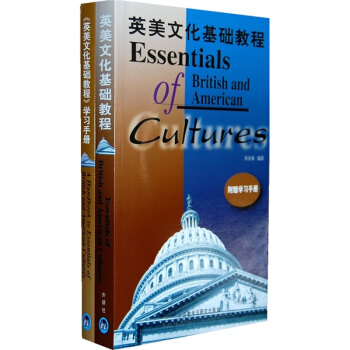
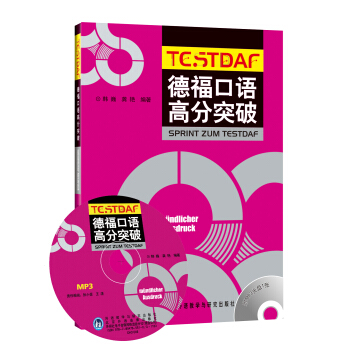
![書蟲牛津英漢雙語讀物·哈剋貝利·費恩曆險記(2級·適閤初2初3年級) [The Adventures of Huckleberry Finn] pdf epub mobi 電子書 下載](https://pic.windowsfront.com/11269045/57ea2e8bN09584658.jpg)
![大自然的小朋友1、2、3(套裝共3冊) [2-7歲、傢長等] pdf epub mobi 電子書 下載](https://pic.windowsfront.com/11998598/5799771eNe70e1d40.jpg)

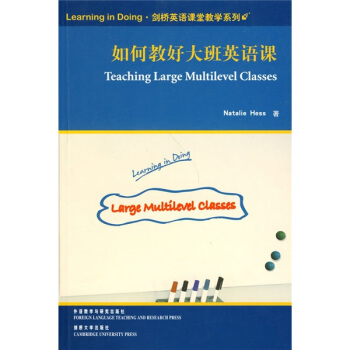
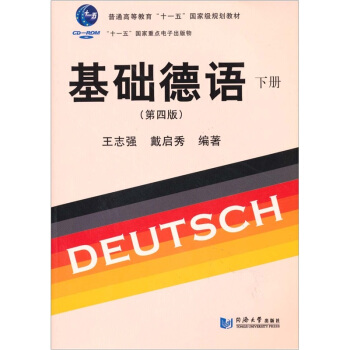

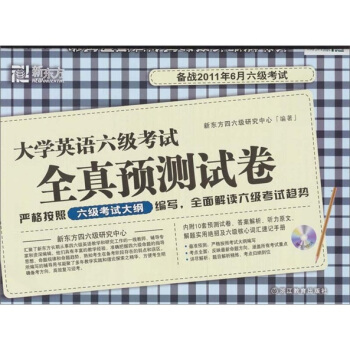


![開明第一英文讀本 [Kaiming First English Book] pdf epub mobi 電子書 下載](https://pic.windowsfront.com/11395020/rBEhVFLciXoIAAAAAAyfJwYRT5oAAIEwAB5nu8ADJ8_260.jpg)

